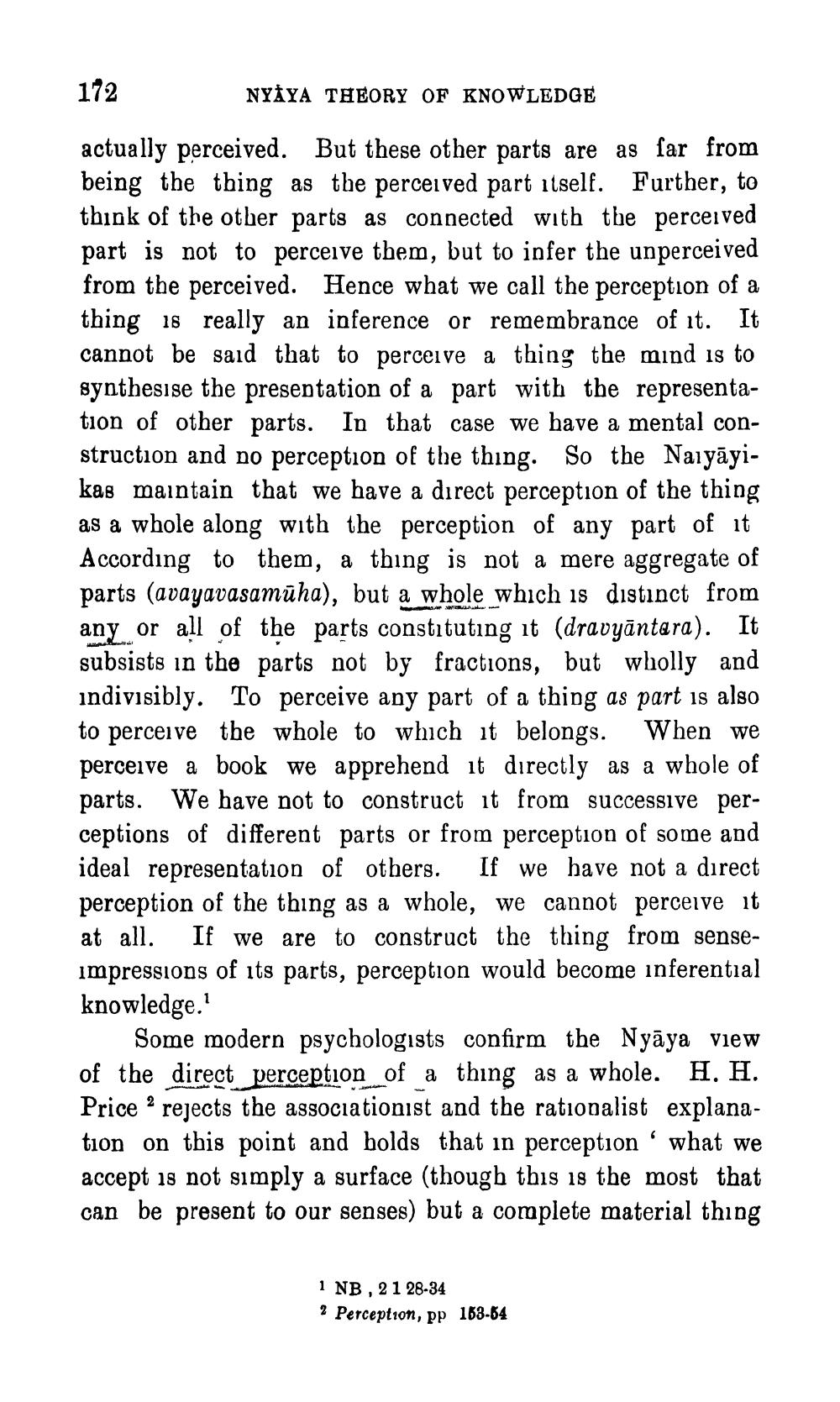________________
172
NYÁYA THEORY OF KNOWLEDGE
actually perceived. But these other parts are as far from being the thing as the perceived part itself. Further, to think of the other parts as connected with the perceived part is not to perceive them, but to infer the unperceived from the perceived. Hence what we call the perception of a thing 18 really an inference or remembrance of it. It cannot be said that to perceive a thing the mind is to synthesise the presentation of a part with the representation of other parts. In that case we have a mental construction and no perception of the thing. So the Naiyāyikas maintain that we have a direct perception of the thing as a whole along with the perception of any part of it According to them, a thing is not a mere aggregate of parts (avayavasamūha), but a whole which is distinct from any or all of the parts constituting it (dravyāntara). It subsists in the parts not by fractions, but wholly and indivisibly. To perceive any part of a thing as part is also to perceive the whole to which it belongs. When we perceive a book we apprehend it directly as a whole of parts. We have not to construct it from successive perceptions of different parts or from perception of some and ideal representation of others. If we have not a direct perception of the thing as a whole, we cannot perceive it at all. If we are to construct the thing from senseimpressions of its parts, perception would become inferential knowledge.
Some modern psychologists confirm the Nyāya view of the direct perception of a thing as a whole. H. H. Price ? rejects the associationist and the rationalist explanation on this point and holds that in perception' what we accept is not simply a surface (though this is the most that can be present to our senses) but a complete material thing
1 NB, 21 28-34 2 Perception, pp 163-64




